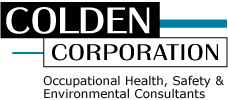Looking for a replacement for solvents to perform your de-greasing and cleaning tasks in your work environment? Is carbon dioxide (CO2) or dry ice pellet blasting a viable alternative?
Overview
Dry ice or CO2 pellet blasting is expanding into new markets, including not only the historical heavy industrial facilities, but high tech and even food manufacturers. The process brings with it many desirable elements such as reduced waste, and reduction or elimination of the need for cleaning solvents. But is the process a good fit for your site and cleaning/de-greasing needs?
In CO2 or dry ice blasting, small pellets of dry ice are propelled out of a blasting wand using high pressure compressed air. The pellets are softer than normal blasting media and begin to sublimate from the frozen solid state to the gaseous state almost immediately after impact. The kinetic energy of the pellet on the surface to be cleaned is minimal, which reduces the abrasion of the surface of the part being cleaned. Compared to other blasting media methods commonly used in industry, CO2 pellet blasting is desirable because it does not create secondary waste streams.
While CO2 blasting does alleviate some common environmental and industrial hygiene issues such as waste generation and employee exposures to solvents, there are other safety and industrial hygiene concerns to consider.
Ventilation
Since the CO2 pellets sublime from the solid pellet to the gaseous form of CO2, the blasting should be used in well ventilated areas. The US Occupational Safety and Health Administration (OSHA) sets the 8-hour time weighted (TWA) Permissible Exposure Limit for CO2 at 5,000 parts per million (ppm). The American Conference of Governmental Industrial Hygienist has set 5,000 ppm as the 8-hour TWA Threshold Limit Value (TLV) as well, with a fifteen minute short term exposure limit (STEL) of 30,000 ppm.
In addition, if the process is used in a poorly-ventilated area, the CO2 can displace the oxygen resulting in an oxygen deficient atmosphere and pose an asphyxiant hazard. Remember the CO2 pellets at normal atmospheric pressure are at approximately minus 100ºF therefore if exhaust ventilation is used, the exhaust vents should be at or near the floor level to remove the gas. Any gas exhausted out of the work area should be exhausted directly to an outdoor environment whenever possible.
Whenever used, good industrial hygiene practice should include personal and area air monitoring for not only CO2 but oxygen levels as well. Most confined space multi-gas meters are set up with oxygen as a common parameter, however CO2 is not typically one of the four gas sensors. Be sure to obtain a meter with a CO2 sensor.
Elevated Noise Levels
As with any high pressure compressed air equipment, the act of propelling the media through the blasting wand tip creates a significant amount of noise. It is not unusual to have noise levels up to 115 decibels A-weighted (dBA) during blasting. At the very minimum, the CO2 blasting crew should utilize dual hearing protection and job rotation should be considered to ensure that the workers daily noise dose, even with the dual hearing protection, is not exceeded. Before the use of CO2 blasting is considered, employers should ensure they are able to fully comply with the US OSHA Noise Standard (29 CFR 1910.95).
Note that some manufacturers of the CO2 blasting equipment have begun to recommend using noise isolation chambers that help control the high noise levels in areas adjacent to where the blasting is taking place. While this helps reduce the noise levels in the adjacent areas, it would do little to reduce the noise levels the worker performing the blasting are exposed to. In addition, the isolated chamber may also create an area where CO2 can build up if the isolation chamber is not properly ventilated.
Potential Airborne Hazards
Other airborne hazards may need to be addressed during the dry ice pellet blasting, including the residue being cleaned and any coatings on the surfaces being blasted. For instance, when using this process to degrease parts or surfaces, oil mist and or metal working fluids may become aerosolized. Painted or galvanized surfaces, if not in good condition, have the potential to release iron oxide or paint components such as lead, chromium and zinc oxide to name a few.
Personal Protection Equipment Considerations
In addition to appropriate gloves to protect against the low temperatures likely to be encountered when handling the blasting wand or filling the dry ice pellet hopper, dual hearing protection which would include both ear plugs and ear muffs should be required. The employees performing the dry ice blasting should utilize face protection in the form of a wraparound face shield, safety glasses, hard hat and adequate foot protection. Disposable coveralls should also be worn to help protect the workers clothes from any potential airborne contaminants released during the blasting. Depending on the composition of the residues being removed, respiratory protection may also be required.

